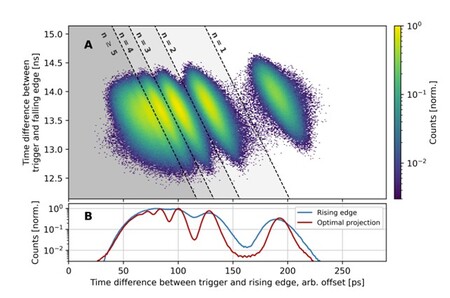
A: A two-dimensional histogram of the time difference between the trigger of a pulsed laser and the rising and falling edges of electrical pulses generated from detection events. The histogram shows well-distinguishable modes that can be related to the photon numbers. We verify this by correctly predicting the photon number statistics of various µ (see main text). B: Projections of the histogram to the rising edge (blue) and for optimal mode distinction (red, along mode separation boundaries in Fig. 1 A). Also considering the falling edge results in substantially better distinguishability of photon-number modes (Sauer et al., arXiv:2310.12472v1 [quant-ph] (2023)).